Gooseberries are considered one of the most common garden shrubs that grows in almost every area. Being an unpretentious culture, it lives quietly and multiplies with minimal care and any climatic conditions. The only thing a gardener needs to know is how to prune gooseberries in the fall for beginners.
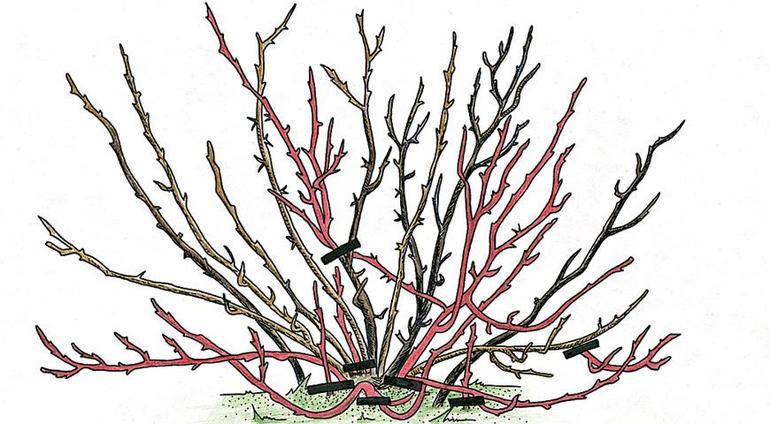
Content
Cropping destination
Getting down to the autumn pruning of gooseberries, you need to figure out what is the use of such an event. First of all, the general principle that is common to all garden plants that can be trimmed is taken into account - careful shrub care. Cutting off the extra parts of the culture, you can avoid the development of various diseases, as well as solve a lot of problems. Among them:
- Poor productivity.
- Lack of decorativeness.
- Vulnerability to diseases and viruses.
To successfully cut gooseberries, you must follow the instructions and take into account the basic rules. In this case, the event will provide the shrubber with suitable conditions for the full development, reproduction and further life activity. If you want to have a healthy, viable and productive crop in your area, you can not neglect trimming.
 You may be interested in:
You may be interested in:Causes and predisposing factors
There are many predisposing factors that motivate gardeners to cut gooseberries. The main reasons include the following items:
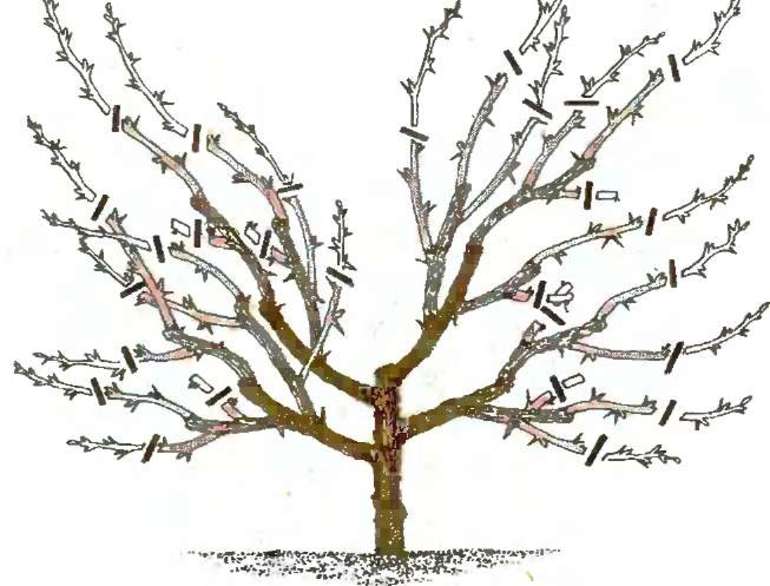
- Planting rejuvenation. It is no secret that plants aged eight years old are old. The older shoots of gooseberries begin to die off and cease to produce crops. In order to extend the life span and achieve good fruiting, the culture needs to lend itself to anti-aging pruning. This procedure has a positive effect not only on the aerial elements of the gooseberry, but also on the root system, because they are closely interconnected. By removing excess shoots or shortening them, you can start the natural process of absorption of useful elements by the roots, and then by the branches, where new stems will form with dense foliage and plentiful flowering.
- Raising productivity. It is known that the bush is able to create an impressive number of new shoots in a short period of time. If you do not remove them, cutting off the excess areas, the crown will grow very quickly and will begin to use a lot of useful trace elements. This phenomenon will adversely affect the indicators of productivity and fruit ovary. In addition, a thickened crown worsens the decorative appeal of a culture and makes it vulnerable to disease. To avoid such problems, it is enough to carefully get rid of excess branches, as well as provide a good flow of fresh air to the bush. In this case, pollination of the plant will be as productive and affordable as possible.
- Prevention Like other garden crops, gooseberries are exposed to all kinds of diseases and parasites. Many of them appear with excessive thickening of the bush (especially fungi). Regular pruning will be the best prevention of such problems and will allow the shoots to get the right amount of light, as well as prevent the interaction of diseased branches with healthy ones.
- Decorative work. If you trim to form a beautiful crown, then you need to decompose it into several stages. In this case, the trimmed shrub will look beautiful and attractive.
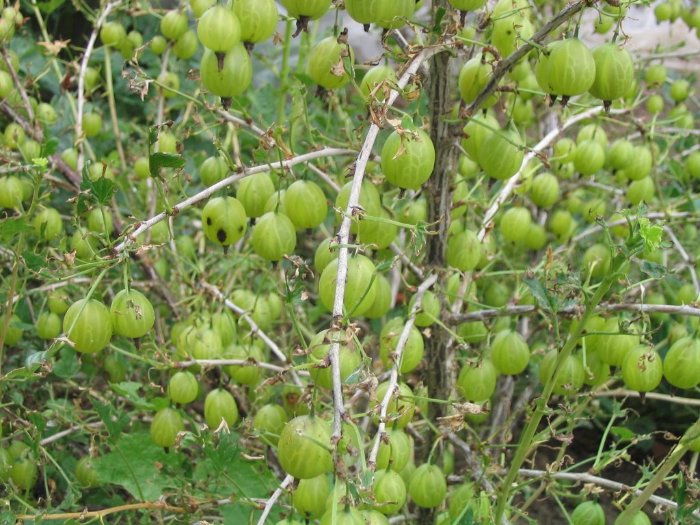 You may be interested in:
You may be interested in:Tool selection
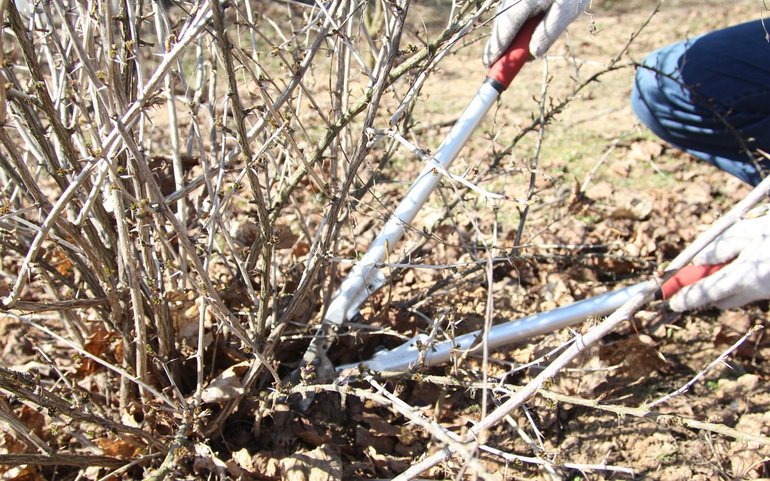
In order for the upcoming gooseberry pruning to be successful, it is important to use suitable garden tools. First of all, you need to find a sharp secateurs and delimbers. It is also important to take care of personal safety and put on protective cotton gloves. They protect your hands from possible contact with spikes or sharp tools.
Secateurs are designed to quickly remove small branches that are on the surface. It is impossible to handle thick branches with such an instrument. For old bushes with thick branches, it is better to use a sharp hacksaw or professional delimbers. The last device effectively cuts powerful branches up to 5 centimeters thick, which are located in the depth of the bush.
When choosing garden tools, you need to be guided by some criteria and check if it meets certain requirements:

- Reliability and durability. The tools used must not be damaged by an impressive impact, for example, when removing thick branches and twigs.
- Sharpness. The quality of the blade sharpening should be high. It should not have nicks or other defects.
- Minimum weight. For comfortable trimming, light tools should be used. Gardening with heavy equipment is much harder than light.
- Ease of use. Any cutting equipment should have a comfortable grip. In addition to a comfortable shape, it should be equipped with rubber inserts that prevent slipping of hands.
A car is used to remove wood waste. In addition, the gardener needs to purchase various disinfectants, with which you can treat parts of the plant affected by bacteria and fungi.
Beginning of work
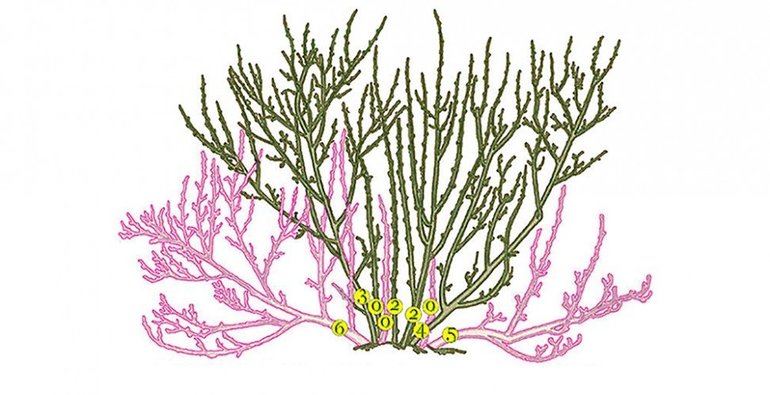
Inexperienced gardeners often make mistakes when trimming gooseberries in the fall. Schemes and step-by-step instructions will help to avoid incorrect actions and conduct the event in the best possible way.
In the process of pruning shrubs, gardeners often radically cut off everything that seems superfluous. This approach seriously harms gooseberries, because it can’t regain strength and get used to the new form before the onset of cold weather. Experts recommend leaving at least 30% of the initial biomass, otherwise the plant may die.
In order for the future adult shrub to grow beautiful and healthy, you need to correctly form its crown. To do this, you should familiarize yourself with the structure of the culture, as well as consider the general principles of trimming.
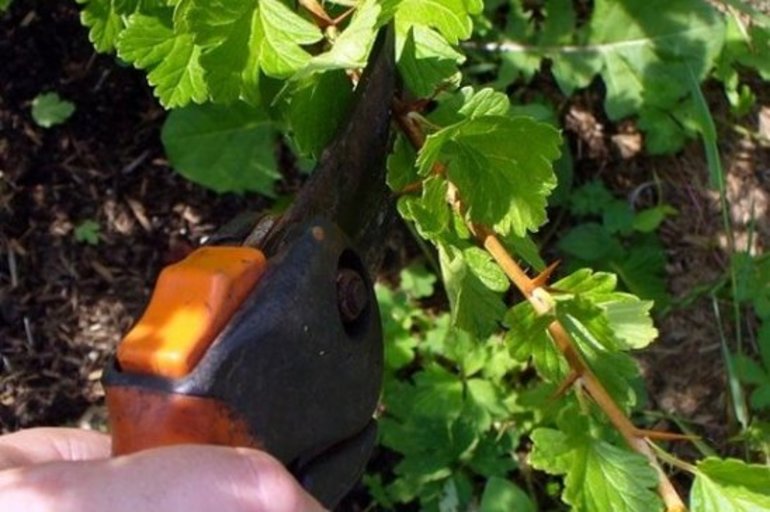
Being a fast-growing perennial, gooseberries can grow up to one and a half meters in height. From its branches and basal shoots, approximately the same crown is formed.
In the first year of their life, shoots develop at an incredible rate. By the middle of the summer season, they become reddish or brown, and in the fall they acquire a lignified structure. A year later, fresh shoots grow from the trunk, which become the basis of the branches. The annual increase in length is 8-30 centimeters. For several years, one process turns into a full-fledged branch of the second order.
Branches 1−2 and 3rd order are characterized by maximum productivity, because they are well developed and strong.Carrying out regular trimming works allows you to maintain the vitality of the crop, and also increases the annual yield.
In addition, we must not forget about the specific structure of the gooseberry root system, which is able to create lush basal shoots. If you do not cut it on time, this will lead to a decrease in fruiting and loss of decorative culture.
Bush formation
As for the work on the formation of the shape of the crown, their intensity is determined by the age and other characteristics of the bush. To determine the current age, just look at the bark, guided by the following principles:
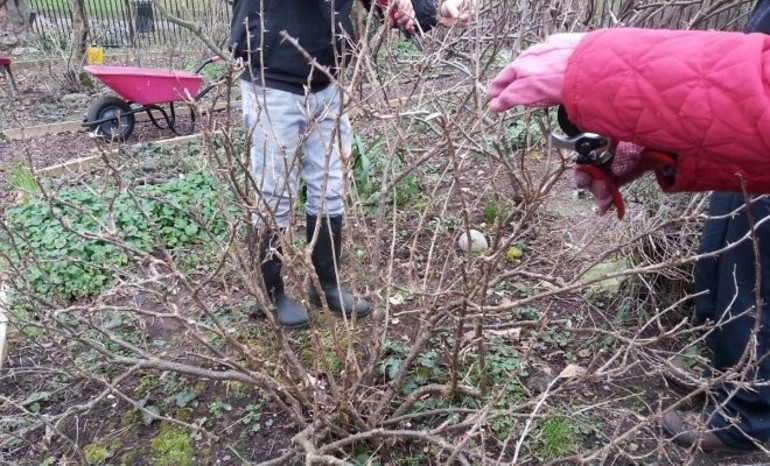
- Young specimens have a smooth bark with an intense greenish tint.
- Old shoots are covered with a rough, thick bark with dark gray shades.
The first pruning is carried out before the spring rooting of young seedlings. It involves the removal of the tops on all branches, and in such a way that no more than four buds remain from the root system. Such an approach will be a good stimulation of the formation of fruiting branches upon the return of the warm season. Pursuing such pruning, it is necessary to eliminate dead branches, removing them to the place of formation of fresh shoots.
Novice gardeners should understand that during the first two to three years the bush will not bear fruit in such quantity as expected. However, this does not mean that the culture does not need to be taken care of and ignored all the nuances of proper care. The period of the best fruiting falls on the 5-10th year of life, after which it worsens. To start the natural stimulation of growth and increase productivity, it is enough to conduct an effective formation of the bush. To do this, you must perform the following activities:
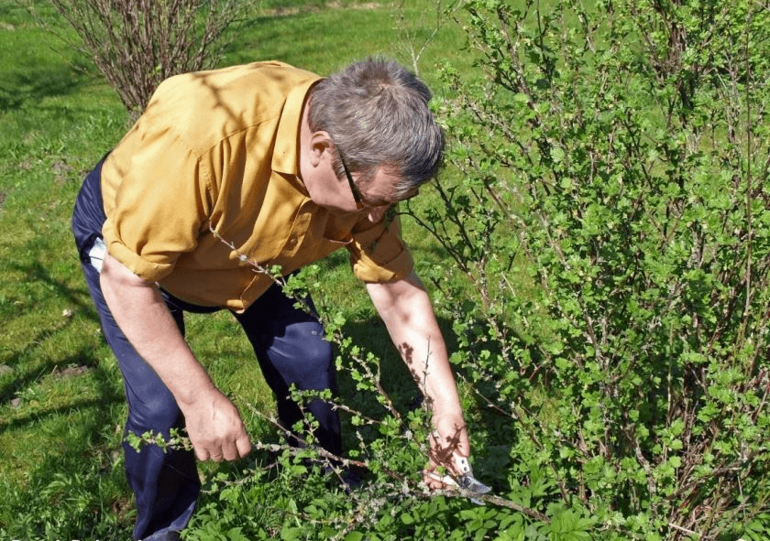
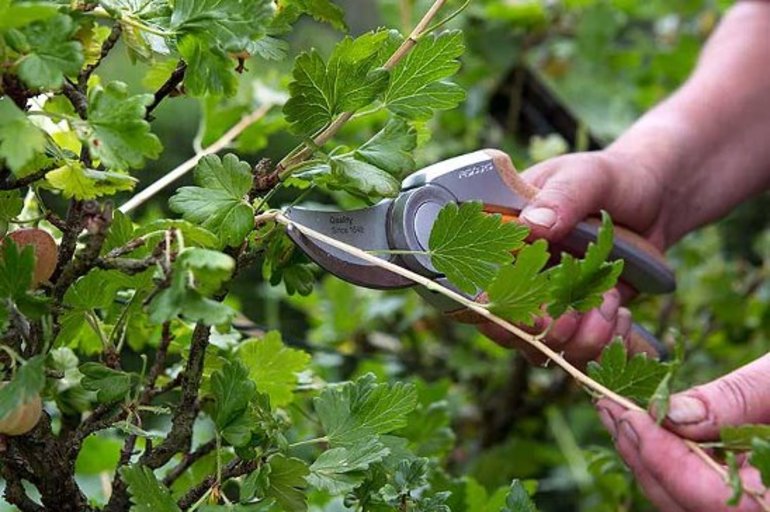
- In the first year of life, weak and damaged shoots are removed from the plant. Strong and strong seedlings are cut to 2-3 buds at the top.
- Two-year-old bushes are formed in such a way that 3 or 4 powerful trunks remain.
- Three and four-year-old plants should have the main shoots, preferably no more than 4-5 copies. Zero shoots are removed at the very base, and a third of the length is removed from the rest.
- Five-year shrubs do not need a shaping haircut. It is enough to clean them from weak, sick and dead shoots in time, which take up useful trace elements and worsen yield indicators.
The remaining trimming work is aimed at cleaning the culture from non-fruiting shoots. In most cases, this applies to 7-8-year-old specimens, which are slightly curved and have a dark bark.
Anti-aging treatments
Being interested in the intricacies of gooseberry pruning in the fall, it is important for a beginner to know about anti-aging procedures. They are intended for those bushes that have ceased to bear fruit (as a rule, these are 10-year-old specimens). Experts recommend cutting a large part of the shrub to artificially stimulate the formation of new sprouts. To do this, remove all the branches from which the seedling grew. However, prudence must be respected and avoid bush destruction too radical pruning.It is better to gradually replace old shoots with young shoots, so that as a result, about 50 percent of its biomass remains on the bush. Older plants are characterized by large volumes of zero growth and minimal growth of promising branches. For the season, it is recommended to remove up to 1/3 of the extra sprouts.
It is important to understand that it is almost impossible to return the old yield to old gooseberries, but it is still possible to improve the overall fruiting rates. Therefore, it is recommended to weigh all the pros and cons, as well as proceed with anti-aging procedures.
Final stage
Having figured out how to trim the gooseberries in the fall (schemes and step-by-step instructions can be the best assistant for a beginner), it remains to proceed to the final stage. It consists of recovery procedures that allow the culture to endure stress and continue normal development. Proper maintenance and cleaning of the plant means comprehensive care, which consists of the following steps:
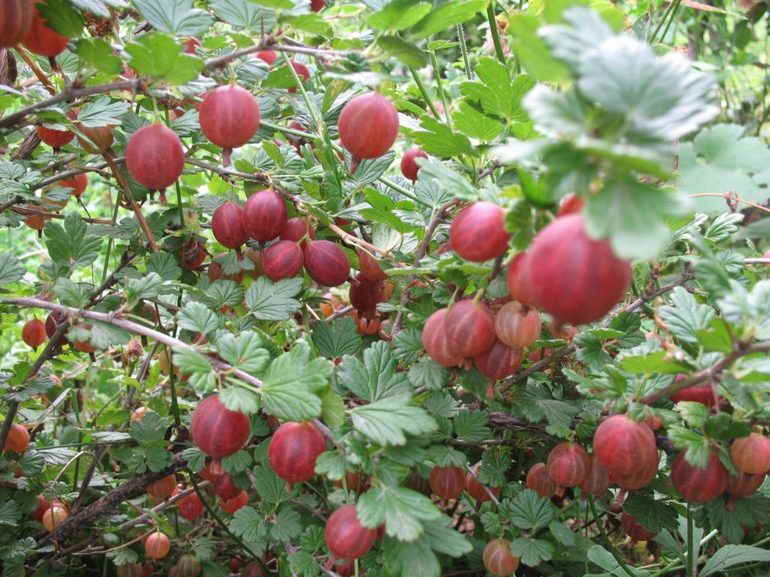
- Coating large sections with garden varnish solution. And also a good disinfectant is crushed coal and urea solution, mixed in a ratio of 1: 7.
- Fertilizing culture mineral and organic fertilizers. Experts advise to give preference to ready-made complexes marked "for autumn processing." The fact is that in spring other compounds are used that stimulate the recruitment of green mass.
- Abundant watering. The procedure is necessary for the effective preparation of the plant for the upcoming wintering. About two buckets of water (settled and warm) pour out under each root.
- Visual inspection of the culture to determine possible pests or signs diseases. As an additional treatment, fungicidal preparations (Infinito, Teldor and others) are applied to the soil. And you can also use prophylactic agents, for example, Bordeaux liquid. The solution is suitable not only for root treatment, but also for external spraying of the bush.
- Shelter for the winter. This procedure is mandatory for young seedlings, which do not yet have a powerful immune system that can withstand severe frosts. As insulation material, peat or leaf compost can be used. It is important to make sure that the mulch covers at least 50 centimeters of the trunk zone.

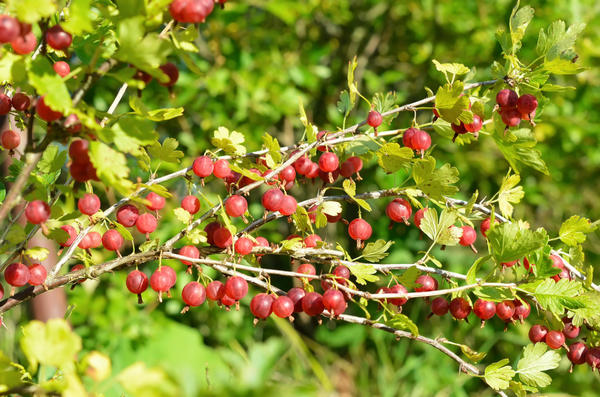
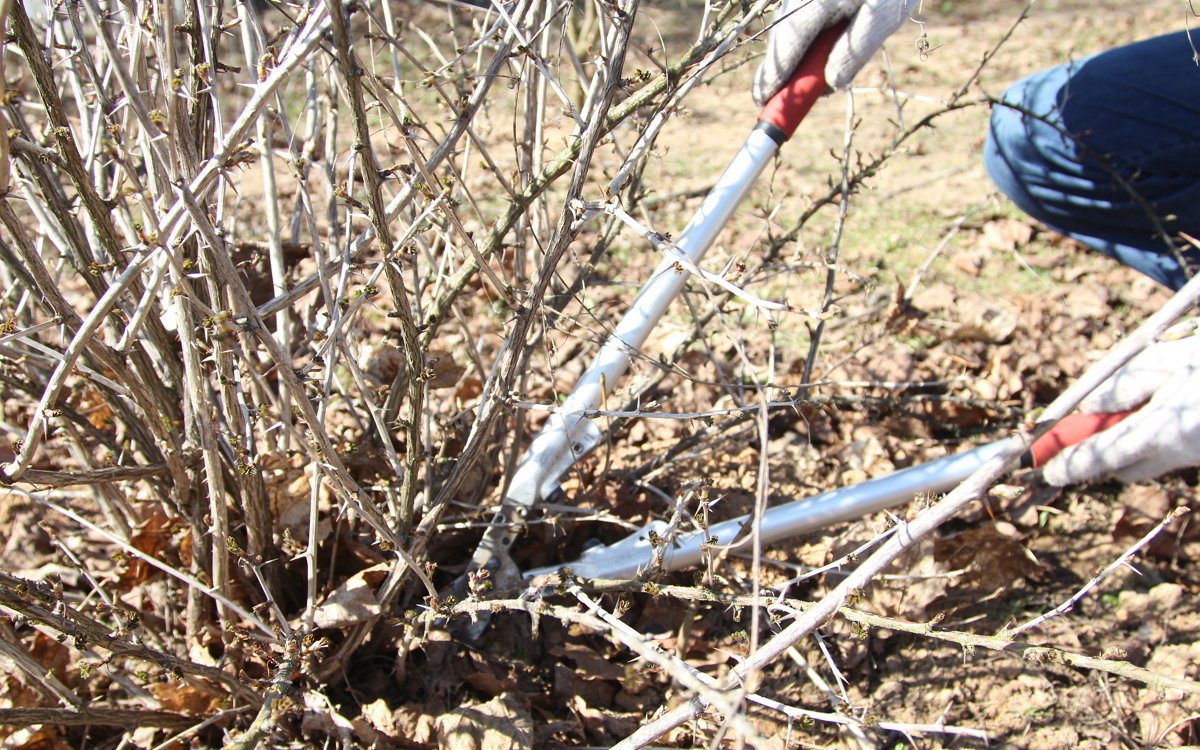
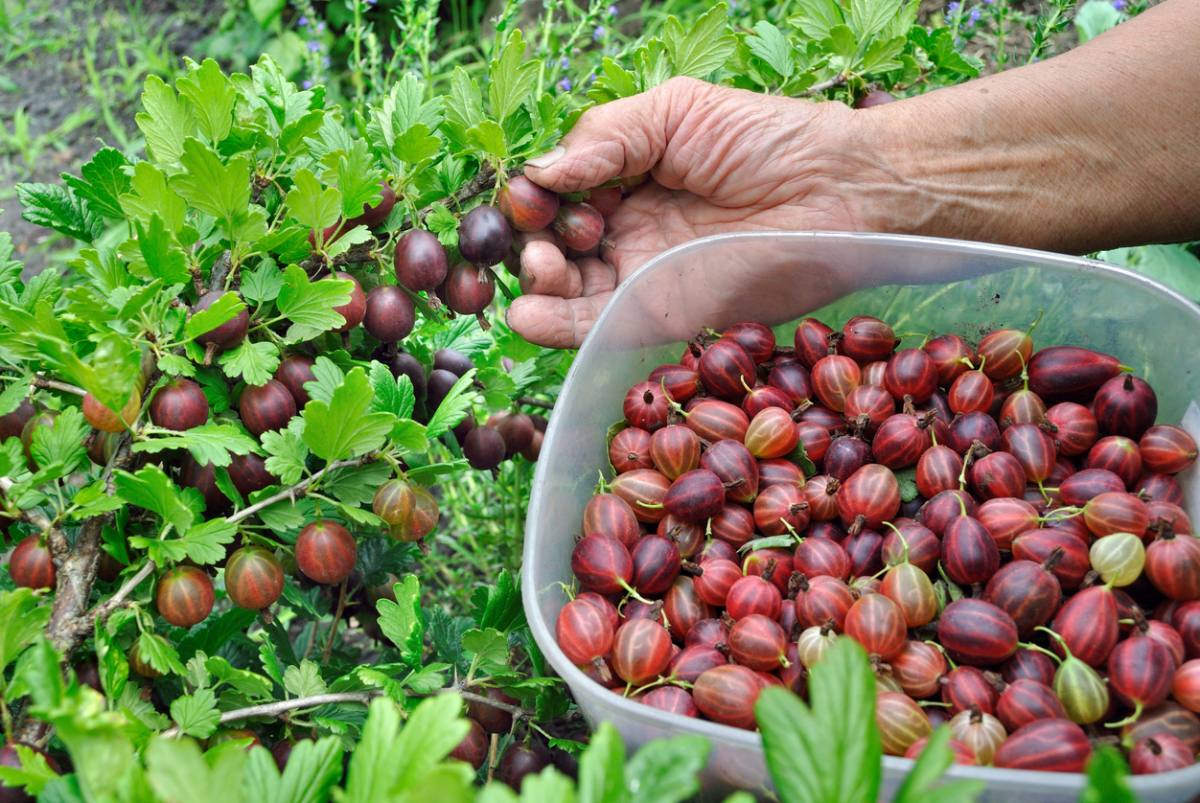
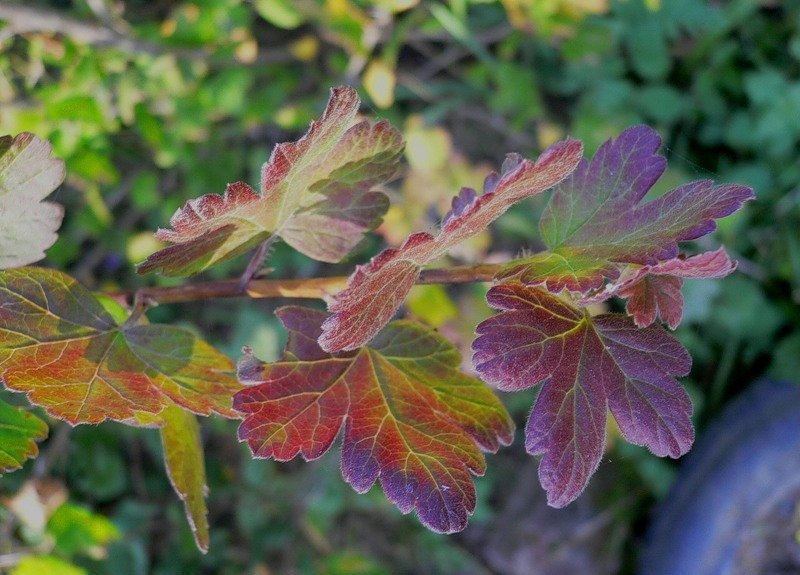 What does the red border on gooseberry leaves mean and what needs to be done
What does the red border on gooseberry leaves mean and what needs to be done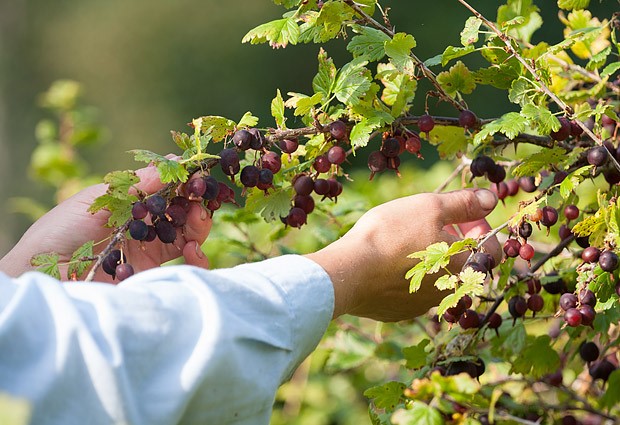 That's the end of summer, it's time to feed gooseberries after harvest
That's the end of summer, it's time to feed gooseberries after harvest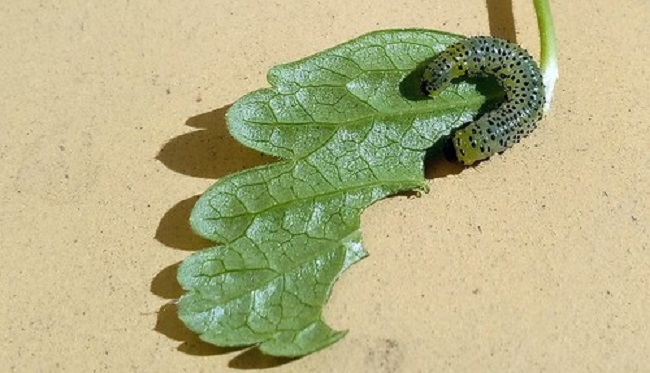 To save gooseberries from the invasion of caterpillars will help vinegar, mustard and ammonia
To save gooseberries from the invasion of caterpillars will help vinegar, mustard and ammonia